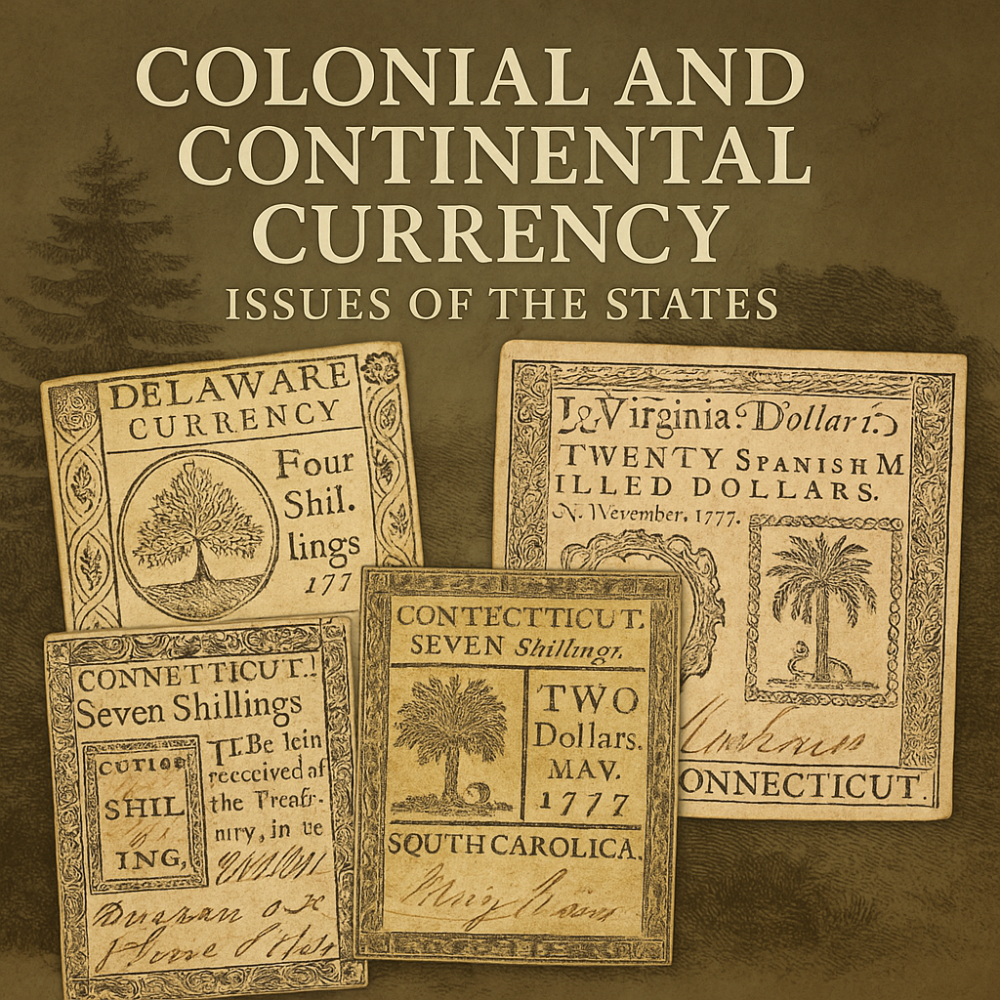The Origins of Colonial Currency
Before the United States existed, the thirteen colonies issued their own paper money to solve problems of trade, shortages of coins, and the need to finance local economies. These notes, known collectively as Colonial Currency, represent the earliest experiments with paper money in North America. Each colony had unique designs, denominations, and issuing authorities, reflecting the independence and ingenuity of the time.
Design and Symbolism
Colonial notes were often printed on fragile paper using simple presses, yet they carried rich symbolism. Many featured coats of arms, nature motifs, or patriotic mottos. Some colonies employed Benjamin Franklin’s leaf printing method, which used actual imprints of leaves to create anti-counterfeiting patterns that were nearly impossible to duplicate.
Diversity Across the Colonies
Unlike the standardized U.S. banknotes of later years, Colonial Currency varied widely:
- Massachusetts issued the first authorized paper money in 1690 to fund military campaigns.
- Pennsylvania became notable for Franklin’s involvement in printing and design.
-
Virginia, New York, and South Carolina issued notes that reflected both their local economies and political climates.
Because each colony had its own system, collecting Colonial notes today offers a wide variety of styles and histories.
Challenges with Value and Acceptance
Colonial notes often suffered from depreciation. Without a unified monetary system, trust in paper money varied from colony to colony. Inflation, counterfeiting, and inconsistent backing caused difficulties, yet these notes laid the groundwork for what would later become the unified U.S. monetary system.
Why Collectors Value Colonial Notes
Today, Colonial notes are rare survivors of pre-Revolutionary America. They hold historical significance as artifacts of the colonies’ struggle to establish stable financial systems before independence. Condition, rarity, and issuing colony all affect value, making them highly prized in the numismatic community.
Parthava Coin and U.S. Paper Money
At ParthavaCoin.com, we honor the legacy of Colonial and Continental Currency through educational resources and collector insights. While we do not offer Colonial issues for sale, our selection of graded U.S. banknotes provides collectors with the opportunity to own later pieces of America’s monetary history.
✨ This story will continue — stay with us at Parthava Coin as we move deeper into the history of U.S. paper money, exploring Treasury Notes, Large Size notes, and beyond.


Share:
Colonial and Continental Currency (Part 1)
Rising Gold & Silver Prices Spark Early Collectible Coin Demand